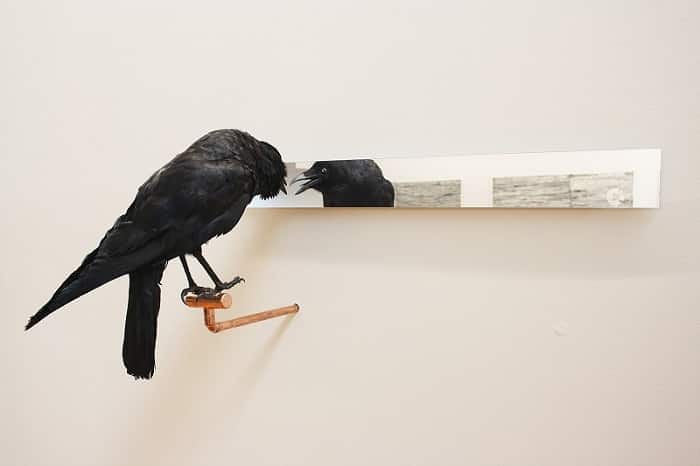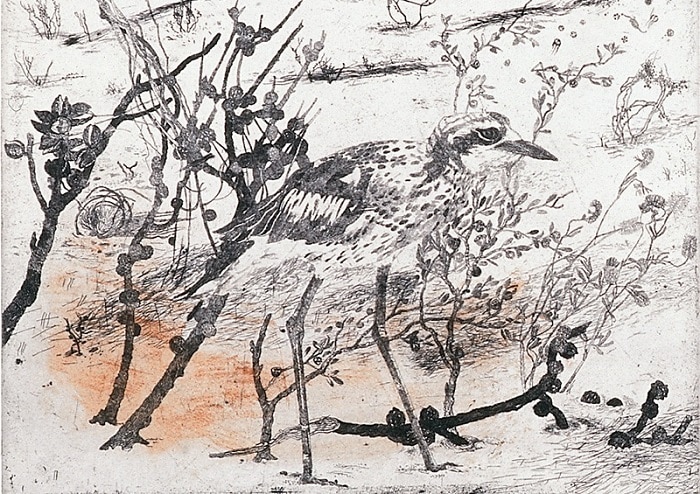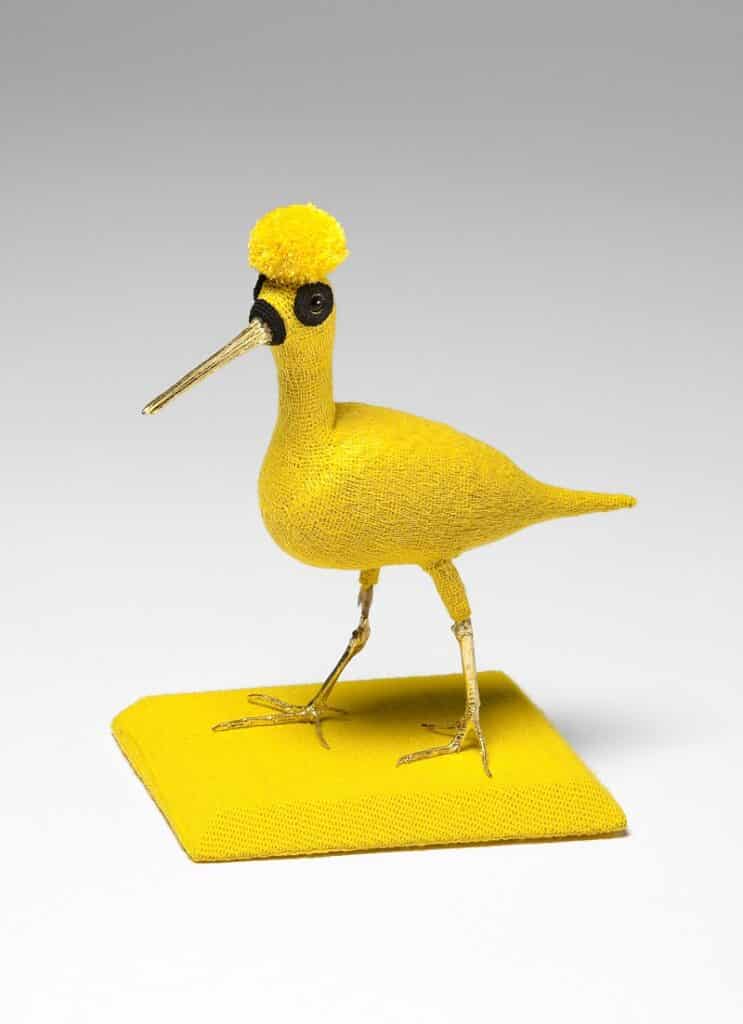‘Birds & Language’ at Wollongong Art Gallery (WAG) brings focus to the ways in which artists articulate complex ideas using visual messaging in creative practice. Inspired by birds, the exhibition curated by Madeleine Kelly presents a gathering of artworks by twenty-one contemporary artists, which explore the possibilities of exchange and communication between humans and the natural world. On view until 13 February 2022.
“There is a world we cannot see, and perhaps a language imperceivable to us, where more striking parallels between human and bird language might exist, and to which these artists open our eyes and ears.” – Wollongong Art Gallery

For thousands of years, from ancient civilisations to the modern world and across cultures, birds have been used to symbolise and evoke peace, spirituality, love, hope and wisdom, collective strength, leadership and power. In Australia alone there are over 800 unique species of birds from the most common varieties we see in our own backyards to those which inhabit the bushlands, forests, desert regions, wetlands, coastal landscapes and the places in between. We hear the sweet songs of birds at dawn and their busy ruckus as the sun goes down but what are their euphonious sounds, high pitched squawks, melodious tunes, twitches and flutters, saying to one and other, to us?
“Within human language words are in and of themselves inert, they are merely symbols to which we attach meaning. There is no objective truth or reality in words. How language is used, and knowledge is applied is a construct of our social behaviour very much dependent on the respective culture and its conventions and beliefs,” writes Gallery Program Director John Monteleone.
“So, what do we know about other possible language modalities and forms and how do we approach and respond to them? It is an intriguing proposition and one creatively explored in curator Madeleine Kelly’s exhibition Birds & Language,” he adds.
Artists Glenn Barkley, Barbara Campbell, Fernando do Campo, Eugene Carchesio, Ashley Eriksmoen, Emily Floyd, Liam Garstang, Danie Mellor, NOT, Bilinyarra Nabegeyo, Djawida Nadjongorle, Raquel Ormella, Debra Porch, Marie Celine Porkalari, Joan Ross, Laurens Tan, Hollis Taylor, John Tonkin, Jenny Watson, Louise Weaver and John Wolseley, respond across a variety of creative mediums, including watercolour, hand-painted digital collage, sculpture, taxidermy, glass, letterpress, bark painting and sound work, alongside a selection of Aboriginal artworks from Western Arnhem Land and the Tiwi islands, drawn from WAG’s collection.

In Aboriginal art and storytelling birds often feature in stories of creation and country. Tiwi artist Marie Celine Porkalari’s pelican wood carving titled Bird (c.1985) manifests the Tokwampuwi: mortal beings who acted as witnesses, messengers, mourners, informers and law makers in Tiwi culture. Djawida Nadjongorle’s (1943-2008) bark painting of the Brolga (1990) embodies Nawura, the ancestral spirit who ‘taught men how to catch freshwater fish’. And, providing knowledge for hunting, Bilinyarra Nabegeyo’s (c.1920- early1990s) Emu painting on eucalyptus bark reveals the central nervous system of the flightless but fast running bird.
Liam Garstang questions the notion of birds and their ability to self-recognise with his work Affirmations #4, a sculptural installation of a taxidermied black crow, beak aghast, peering curiously at itself in a mirror. As the exhibition catalogue notes, “The mirror provides a metathesis of visibility that affects our reading of its nature as representation, as well as Garstang’s memory of his early life in rural New South Wales.”
Eugene Carchesio exhibits a series of watercolour paintings featuring various species of rainbow-coloured birds, each pictured with geometric shapes signalling connection between bird and object. “Their interrelated shapes suggest a common formal ancestry (homology). By playing with their morphology, Carchesio flags a kind of biosemiosis, where sign and life converge.”

Louise Weaver’s bird sculpture titled Golden Snipe (2010) brings a taxidermied wetland bird to life. Woven in bright yellow crocheted thread, Weaver’s imaginative bandage suggests hope for the repair of human damage to the fragile natural world.
Zoömusicologist Hollis Taylor captures anthrophonies (human language, footsteps, musical instruments), biophonies (birdsongs, stridulating insects, or croaking frogs), and/or geophonies (non-creature sounds of wind or water) in a series of soundscapes attuned to the acoustic intrusion of human activity in birds’ acoustic medium, the soundtope. Soundtopes are the unseen sonic patterns that are crucial to how birds communicate and share information through time and space with their own and other species.
These works and more demonstrate the wonderfully complex nature of birds and language and the potential to exceed the limits of our understanding and communications with the natural world.
‘Birds & Language’ free public program
Wednesday 2 February 2022 from 1-2pm: Join the curator and artists for an informative walkthrough the exhibition.
Sunday 13 February, 1.30-3pm: ‘The Language of Birds: Writers Listen’ presents a series of stories and poems that explore human/avian encounters. Curated by Joshua Lobb, author of ‘The Flight of Birds’.
Visit Wollongong Art Gallery’s website here to find out more about the ‘Birds & Language’ exhibition, and to see what the gallery has in store for the new year.